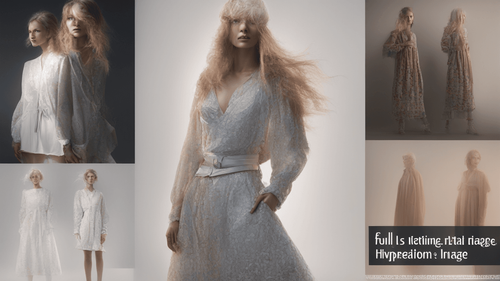
Introduction
In the ever-evolving landscape of artificial intelligence, one innovation stands out as a true game-changer: online AI text to image conversion. This cutting-edge technology has the power to bridge the gap between words and visuals, revolutionizing industries and opening up new avenues of creativity. From generating stunning visuals based on textual descriptions to enhancing communication and storytelling, the potential of online AI text to image conversion is boundless.
Online AI Text to Image: A Paradigm Shift in Creativity
The Fusion of Language and Imagery
Online AI text to image conversion represents a monumental leap in the realm of creativity. It amalgamates the power of natural language processing with image generation algorithms, resulting in a seamless conversion of textual descriptions into captivating visuals. This fusion not only enriches artistic expression but also holds immense promise in fields like marketing, design, and content creation.
Unlocking Visual Storytelling
Imagine being able to transform a vivid narrative into a series of lifelike images. Online AI text to image conversion empowers storytellers to breathe life into their tales, captivating audiences with immersive visual experiences that complement the written word. This technology enables authors, filmmakers, and game developers to create worlds that were once limited to the confines of text.
The Mechanics of Online AI Text to Image Conversion
Natural Language Processing (NLP) as the Foundation
At the heart of online AI text to image conversion lies natural language processing (NLP). This intricate process involves parsing and comprehending textual input, extracting key elements, and generating corresponding visual representations. NLP algorithms meticulously analyze semantics, context, and syntax to ensure that the generated images faithfully capture the essence of the text.
Generative Adversarial Networks (GANs): Crafting Visual Realism
Generative Adversarial Networks (GANs) play a pivotal role in achieving visual realism in AI-generated images. GANs consist of a generator and a discriminator network, engaged in a continuous feedback loop. The generator strives to create images that the discriminator perceives as real, while the discriminator's expertise in distinguishing real from fake images constantly sharpens the quality of the generated visuals.
Applications Across Diverse Industries
E-Commerce: Elevating Product Presentations
Online retailers can leverage AI-generated images to showcase products from every angle, providing customers with a holistic view that enhances their purchasing decisions. This technology revolutionizes virtual shopping, allowing customers to virtually interact with products before making a purchase.
Advertising and Marketing: Visualizing Concepts
In the realm of advertising, concepts and ideas can be challenging to portray. Online AI text to image conversion empowers marketers to transform abstract concepts into compelling visuals, resonating with audiences and leaving a lasting impact.
Education: Enriching Learning Materials
Educational content comes to life through visual aids. AI-generated images can enhance textbooks and online courses by providing students with clear and engaging visuals that facilitate comprehension and knowledge retention.
Entertainment and Gaming: Building Immersive Worlds
The entertainment industry is embracing AI-powered image generation to create breathtaking visuals in movies, TV shows, and video games. This technology adds a layer of realism that transports audiences into new realms of immersion.
FAQs
How accurate are the AI-generated images?
AI-generated images are becoming increasingly accurate due to advancements in AI and machine learning algorithms. However, some variability in quality may still exist.
Can AI-generated images replace human creativity?
AI-generated images serve as powerful tools to augment human creativity, but they are not meant to replace the unique artistic sensibilities that humans bring to the table.
Is online AI text to image conversion accessible to all industries?
Yes, online AI text to image conversion has applications in various industries, from fashion and design to healthcare and architecture.
What are the ethical considerations surrounding AI-generated images?
Ethical concerns include issues related to copyright, authenticity, and the potential misuse of AI-generated images. It's crucial to address these concerns as the technology evolves.
Are there limitations to the complexity of images that AI can generate?
While AI has made remarkable strides in generating complex images, there are still challenges in creating highly intricate or hyper-realistic visuals.
How can businesses implement online AI text to image conversion effectively?
Businesses can start by identifying areas where visual content is crucial, such as marketing campaigns or product presentations. They can then explore AI-powered solutions tailored to their needs.
Conclusion
Online AI text to image conversion has ushered in a new era of creativity, transforming the way we communicate, entertain, and educate. By harnessing the synergy between language and imagery, this technology offers boundless possibilities across industries. As AI continues to advance, the realm of visual storytelling is set to expand further, and the potential for innovation remains limitless. Embracing the power of online AI text to image conversion, we embark on a journey toward a future where words are not only worth a thousand pictures but can effortlessly conjure them too.